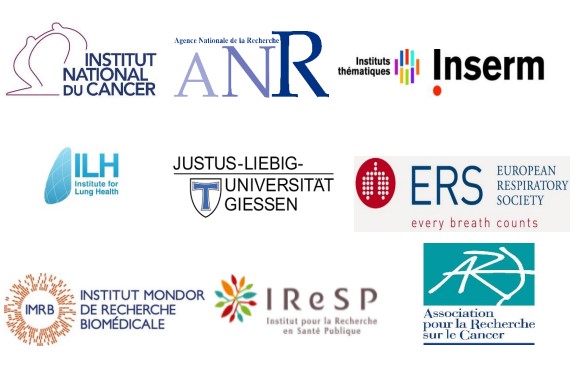Serge Adnot, MD PhD, is Professor of Physiology (School of Medicine, University Paris-Est-Creteil, France), where he heads the research group “Role of cellular senescence in respiratory diseases” at the INSERM Mondor Biomedical Research Institute. He is MD in the clinical functional tests department of the CHU Henri Mondor, which he led until 2018. He was jointly appointed in 2021 as a professor at the Institute for Lung Health (ILH) of Justus Liebig University (JLU) in Giessen, Germany, where he leads the research group “Cellular senescence and Lung Disease.”
He is focusing his research on the role for cell senescence in the pathogenesis of lung disease and/or as a new treatment target. Cell senescence consists in a stable proliferation arrest and the acquisition of a specific senescence-associated secretory phenotype (SASP) characterized by the release of inflammatory cytokines, immune modulators, proteases, pro-fibrotic factors and various effectors that can alter tissue organization and function. It is triggered by a myriad of stress constellations, which promote a DNA damage response leading to p53-dependent upregulation of the CDK inhibitor p21 and/or expression of p16, used as a reliable marker of senescent cells. Cell senescence is pivotal in various age-associated lung diseases.
The Adnot lab has pioneered the concept that chronic obstructive pulmonary disease (COPD) is associated with accelerated aging and that lung cell senescence is a major propeller of lung alterations. Recent major achievements include the identification of new therapeutic strategies for pulmonary hypertension, undescribed mechanism underlying the lung alterations of chronic obstructive lung disease, and work on cell senescence as a treatment target in several acute and chronic lung diseases. He has co-authored 247 publications and his h-index is 62 (11691 citations).
Scientific Program of the Professorship
Employing these tools and cooperation with several ILH scientists, the following major objectives will be addressed in the forthcoming 5-year period:Cell senescence occurs in a variety of physiological and pathological conditions including tissue remodeling, injury, cancer, and aging, where it can cause either detrimental or beneficial effects. Causality can be demonstrated by suppressing the SASP, blocking the establishment of the cell-senescence program through inactivation of p16 (a key component of the program) or, more conclusively, by selectively eliminating senescent cells and assessing the impact on the lung alterations. Senescent cells can be eliminated by engineering transgenic mouse models or by administering validated senolytic agents.

To this end, several senescence reporter-ablator mouse models have been developed by the S Adnot lab including mice expressing a killer gene construct driven by the p16 promoter (p16-ATTAC mice), mice with a floxed stop codon upstream to the ATTAC transgene with mCherry gene insertion near the ATTAC transgene, mice expressing telomerase or telomerase with an inactive catalytic site under the control of the p21 promoter (p21-mTert and p21-mTertci mice).
Employing these tools and cooperation with several ILH scientists, the following major objectives will be addressed in the forthcoming 5-year period:
A: Test whether Influenza A virus (IAV) or SARS-Cov2-induced lung-cell senescence is a major mechanism involved in the severity and duration of lung viral infection, and whether senescent lung cell persistence after infection underlies the development of post-viral lung disease.
B: Decipher the role for lung cell senescence in lung emphysema
C: Determine mechanisms involved in the cell senescence process that can be targeted pharmacologically.
Prof. Dr. Serge Adnot
Institute for Lung Health (ILH)
Justus Liebig University Giessen
Aulweg 130
35392 Giessen
Faculté de Santé
8, rue du Général Sarrail
94010, Creteil, France
Hopital Henri Mondor
Service de Physiologie Explorations Fonctionnelles
94010, Creteil, France
Tel: +33 (1) 49813701
Tel: +33 (1) 611290227
Email: serge.adnot@inserm.fr
